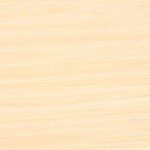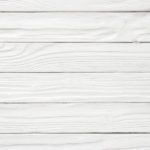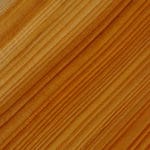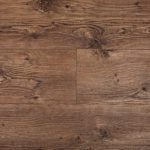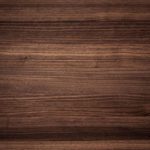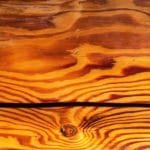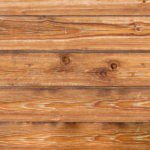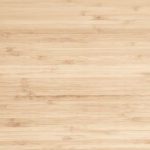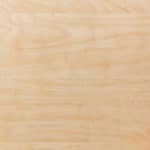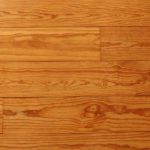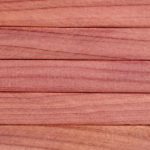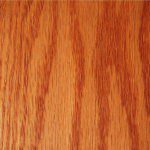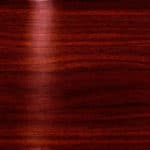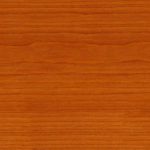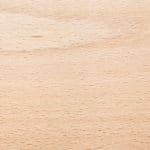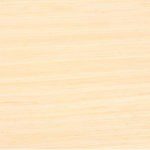The Wood Furniture Database
&
Wood Quality Guide
TYPES OF HARDWOOD DATABASE
Hardness is one of the simplest ways to distinguish the wood used for wood furniture. Contrary to the popular belief, hardwood is not necessarily harder and denser compared to softwood. In botanical terms, hardwood comes from flowering trees while softwood comes from conifers. Both hardwood and softwood are used for everything from structural to decorative purposes, not just wood furniture.
HARDWOOD
Hardwood comes from Angiosperms such as maple, oak, and walnut. These trees lose their leaves annually. As they grow slowly, hardwood has denser wood fibers (fiber tracheids and libriform fibers).  As hardwood is rare, it is relatively expensive compared to softwood. However, there are exceptions. For example, gum is a hardwood that comes at a price compatible with most types of softwood. Hardwood is durable, comes with close grain, and requires low maintenance. It also comes with low sap content and good fire resistance.  Not all types of hardwood are ideal for making furniture.
Hardwood comes from angiosperm, deciduous trees.
It comes with rough wood texture, great for wood furniture.
The presence of vessels makes it porous, also great for wood furniture.
Tracheid content is around just 5% to 10%.
The complex anatomical structure makes hardwood denser, great for wood furniture.
Not all types of hardwood are ideal for wood furniture making. Being expensive, they are usually used in high-end wood furniture manufacturing.
SOFTWOOD
Softwood comes from gymnosperms, which are evergreen trees. Softwood includes trees such as pine, spruce, fir, cedar, juniper, redwood, and yew. Evergreen trees tend to be less dense than deciduous trees. Thus, it is easier to cut them down.  Softwood consists of tracheids and wood rays. As vessels are absent, softwood is also called non-porous wood. It comes with loose grain, higher sap content, and lighter color. However, it comes with poor fire resistance. The fine and lightweight structure makes softwood ideal for making furniture.
Softwood comes from coniferous, evergreen trees.
It comes with fine wood texture.
The absence of vessels makes it non-porous.
Tracheid content is around 90% to 95%.
The relatively less complex anatomical structure makes softwood less dense.
Almost all types of softwood are ideal for furniture making. In fact, about 80% of all timber comes from softwood.
TYPES OF HARDWOOD
MAHOGANY WOOD FOR FURNITURE
Mahogany is one of the most popular hardwood tropical trees. Mahogany wood is prized for its beauty, durability, and color, all great attributes for wood furniture. It is relatively free of voids and pockets. The color darkens over time. As a result, it is a popular choice for wood furniture.
- Color – Reddish-brown to blood red.
- Density – Medium texture and moderately heavy.
- Grain – Straight.
- Common Uses – High-end furniture, interior millwork, exterior doors, windows, and trim.
- Finishing – Sanding sealer.
WALNUT WOOD FOR FURNITURE
Walnut (black walnut) is one of the most popular woods for furniture in the U.S. The dimensional stability, shock resistance, strength properties, and the rich coloration are the reasons behind its popularity.
- Color – Lighter pale brown to a dark chocolate brown with darker brown streaks. Sapwood is pale yellow-gray to nearly white.
- Density – Medium texture, fairly lightweight.
- Grain – Moderately open grain.
- Common Uses – High-end furniture, carving, flooring accents, musical instruments, and gun stocks.
- Finishing – Should be finished with oil-based polyurethane
RED OAK WOOD FOR FURNITURE
Oak trees are native to the northern hemisphere. There are around 600 species of oak, both deciduous and evergreen. Oakwood is remarkably strong, heavy, and durable. It is also resistant to fungal attacks.
- Color – Pinkish red to blonde
- Density – Very hard and strong.
- Grain – Varied and openly porous grain patterns.
- Common Uses – Furniture, cabinets, molding, trim, flooring, paneling, turning.
- Finishing – Natural finish or oil, but they may vary
ASH WOOD FOR FURNITURE
Ash trees are medium to large trees that grow in most parts of the world. Ashwood feels smooth to the touch. It is durable, tough, and flexible. It has excellent nailing, screw holding, and gluing properties. Hence, carpenters love to work with ash wood. However, it produces a distinct and moderately unpleasant smell while working on it.
- Color – Light, creamy-brown.
- Density – Tough, flexible.
- Grain – Open-grained with occasional brown streaks.
- Common Uses – Flooring, millwork, boxes/crates, baseball bats, and other turned objects such as tool handles.
- Finishing – Takes all finishes.
BIRCH WOOD FOR FURNITURE
Mahogany is one of the most popular hardwood tropical trees. Mahogany wood is prized. Birch trees are widespread in the Northern Hemisphere. Though it is closely related to Oakwood, it is much harder. Birch plywood is probably the most widely used as it is hard, stable, affordable, and readily available.
- Color – Heartwood is light reddish brown with nearly white sapwood.
- Density – Hard, medium weight.
- Grain – Usually straight or slightly wavy with small pores.
- Common Uses – Plywood, boxes, crates, turned objects, cabinets, seating, millwork, furniture, interior doors.
- Finishing – Takes all finishes.
MAPLE WOOD FOR FURNITURE
Maple trees are mostly native to Asia. But they are also found in Europe, North Africa, and North America. The maple wood is sturdy, resistant to splitting, and durable. It can be wiped clean with a damp cloth, making it ideal for kitchen furniture.
- Color – The heartwood is typically a darker shade of reddish brown. Sapwood color ranges from nearly white to an off-white cream color. But it can be reddish or golden hue.
- Density – Moderately hard but strong.
- Grain – Closed and generally straight, but may be wavy.
- Common Uses – Everything from furniture and woodenware to flooring and millwork.
- Finishing – Takes all finishes.
CHERRY WOOD FURNITURE
Cherry wood comes from the cherry fruit tree. Cherry wood has rich color, smooth grain, and flexibility, making it a popular choice for wood furniture manufacturers. Â It also steams easily, making it ideal for use in curved designs.
- Color – The color is light pinkish brown when freshly cut. It darkens to a medium reddish brown over time.
- Density – Stiff, strong, medium weight, and moderately hard.
- Grain – Closed and straight.
- Common Uses – Cabinetry, fine furniture, flooring, interior millwork, veneer, musical instruments, paneling, turned objects, and small specialty wood items.
- Finishing – Light to natural finishes are recommended.
BEECH WOOD FOR FURNITURE
Beech trees are deciduous and native to temperate Europe, Asia, and North America. Beechwood is quite durable and resistant to abrasion and shock, making it great for wood furniture. Because beech steam-bends as readily as ash, carpenters love to work with this wood. It also provides an elegant and dated look to furniture. However, it is not dishwasher safe.
- Color – Pink to reddish brown heartwood, sapwood is creamy to pink.
- Density – Very hard and heavy.
- Grain – Straight with a fine to medium uniform texture.
- Common Uses – Chair legs and backs, crates/pallets, railroad ties, flooring, food containers, toys, musical instruments, and woodenware.
- Finishing – Takes all finishes.
TEAK WOOD FOR FURNITURE
Teaks are tropical hardwood trees native to India, Myanmar (Burma), and Thailand. Teakwood is one of the hardest and most durable of all natural woods but one of the most expensive types of wood furniture. It is resistant to rotting, sunlight, rain, frost, and snow, making it suitable for outdoor construction and wood furniture. It is expensive and typically hard to find.
- Color – Heartwood is golden or medium brown and darkens with age.
- Density – It is heavy and strong.
- Grain – Grain is straight. Occasionally, it can be wavy or interlocked.
- Common Uses – Boatbuilding, veneer, furniture, exterior construction, carving, and turnings.
- Finishing – Finishes best with wood lacquer.
EAST INDIAN ROSEWOOD FOR FURNITURE
The rosewood trees grow in tropical environments including countries such as Brazil, India, and Madagascar. Rosewood is durable when dried properly. It comes with white chalky deposits that may dull tools and present problems with finishing. However, it is one of the toughest woods and great for wood furniture.
- Color – Heartwood can vary from golden brown to deep purplish brown, with darker brown streaks.
- Density – Hard, heavy and strong.
- Grain – Usually narrowly interlocked.
- Common Uses – High-end furniture, musical instruments, veneer, and turned wood objects.
- Finishing – Finishes well, but requires initial seal coats.
TYPES OF SOFTWOOD FURNITURE
PARANA PINE WOOD FURNITURE
Parana pine trees also called Brazilian pine are native to southern Americas, especially Brazil. Parana pine wood is free from resin ducts, pitch pockets, and pitch streaks. It has a higher shear strength and nail holding capacity compared to other softwoods. However, it tends to warp and distort during drying and compression.
- Color – Heartwood is light to medium brown, usually with red streaks. Sapwood is yellow.
- Density – Light but hard.
- Grain – Straight, uniform.
- Common Uses – Framing lumber, interior woodwork, sashes, and door stock, furniture case goods, and veneer.
- Finishing – Finishes well, but requires initial seal coats.
EASTERN WHITE WOOD FURNITURE
Eastern white pine trees are widely available in eastern North America. It is one of the most valuable timber species. Eastern pine wood turns golden yellow when exposed to sunlight over time. Once dried properly, it becomes relatively stable. However, it is fairly porous. Thus, it will cup if it absorbs excessive moisture. It is relatively cheap and readily available.
Color – Heartwood is a light brown with a slightly reddish hue. Sapwood is a pale yellow to nearly white.
Density – Soft and very lightweight.
Grain – Straight and tight. However, winter wood and summer wood show a significant difference.
Common Uses – Exterior millwork, furniture, moldings, paneling, carvings, turning, pattern making.
Finishing – Finishes well, but must be sealed with water-based or oil-based polyurethane.
SCOTS PINE WOOD FURNITURE
Scots pine trees are native to northern Europe and Asia. The trees are susceptible to red band needle blight. Scots pine timber is one of the strongest softwoods available. The wood is also resinous. It is less durable, but not susceptible to lyctid borer.
Color – Heartwood is light reddish brown. Sapwood ranges from pale yellow to nearly white.
Density – Reasonably strong and lightweight.
Grain – Straight grained.
Common Uses – Construction, paneling, boxes/crates, poles, flooring, and interior joinery.
Finishing – Finishes well, but must be sealed with water-based or oil-based polyurethane.
LODGEPOLE PINE WOOD FURNITURE
Lodgepole pine trees are commonly found in western North America and Canada. The trees can live to be over three hundred years old. However, they seldom do as they are susceptible to bark beetle attacks. The tangential surface of lumber shows a multitude of dimples, especially when stained. It is, therefore, a favorite for paneling.
- Color – Heartwood is light reddish to yellowish brown and sapwood is yellowish white.
- Density – It is moderately strong and lightweight. But heavier than eastern white pine.
- Grain – Straight
- Common Uses – Ideal for construction lumber, plywood, and paneling. It is also used to make doors, windows and furniture, railway ties, mine props, and fence posts.
- Finishing – Finishes well, but must be sealed with water-based or oil-based polyurethane.
PITCH PINE WOOD FURNITURE
Pitch pine trees are also native to eastern North America. They can grow 50 to 60 feet in height with a trunk of 1-3 feet in diameter. The wood is resistant to fire and abrasion. The high resin content also makes it resistant to decay.
- Color – Heartwood is reddish brown, sapwood is yellowish white.
- Density – Soft and lightweight.
- Grain – Straight grained.
- Common Uses – Heavy construction, plywood, wood pulp, shipbuilding, fences, railroad ties, and veneers.
- Finishing – Finishes well, but must be sealed with water-based or oil-based polyurethane.
WHITE SPRUCE WOOD FURNITURE
All the species of spruce trees are native to northern temperate and boreal (taiga) regions. They are also widely distributed throughout the mountain ranges in continental Europe. White spruce wood turns, planes, and molds nicely. It has excellent nailing and screwing abilities. However, it is only slightly resistant to decay.
- Color – Heartwood is creamy white to light yellow or to red-brown. It is not distinct from sapwood.
- Density – Moderately hard.
- Grain – Fine and consistently straight.
- Common Uses – Pulpwood, construction lumber, joinery, millwork, and crates.
- Finishing – Finishes nicely, but when using a sanding sealer, gel stain or toner is recommended.
RED CEDAR WOOD FURNITURE
Red cedar is a common name for various varieties of cedars growing in the eastern United States region. The red cedar wood (also known as aromatic red cedar) is remarkably resistant to both decay and insect attack. It is highly aromatic and planes and shapes easily. However, it only has moderate screw and nail holding properties.
- Color – Heartwood tends to be red or violet-brown. Sapwood is pale yellow or whitish.
- Density – Hard texture and lightweight.
- Grain – Straight grain with many knots.
- Common Uses – Fence posts, closet and chest linings, carvings, outdoor furniture, birdhouses, pencils, closet interiors, bows, and small wooden specialty items.
- Finishing – Finishes well, but oil finishes are recommended.
FIR WOOD FURNITURE
Fir trees are located throughout most of the North and Central America, Europe, Asia, and North Africa. They usually grow in the mountains. It comes with low shrinkage and reasonable stability. It is also strong and elastic.
- Color – Sapwood is yellowish to reddish-white. Fresh heartwood can be yellowish-brown to reddish-yellow in color. However, it darkens quickly to a brown-red to dark-red.
- Density – Medium-weight and fairly hard.
- Grain – Straight and plain, sometimes wavy.
- Common Uses – Veneer, plywood, and construction lumber.
- Finishing – Finishes nicely. However, you need to take into account the fairly high sap content, which may require a coat of paint.
LARCH WOOD FURNITURE
Larch trees are native to the cooler temperate northern hemisphere. Larch wood is moderate-to-poorly resistant to fungal attack. However, it is durable and very resistant to rot and pests due to the presence of natural resins. Although knots are common, they are usually small.
- Color – Heartwood is yellow to medium reddish brown. Sapwood is almost white.
- Density – Very good strength and medium weight.
- Grain – Straight or spiraled with an oily texture.
- Common Uses – Veneer, utility poles, fence posts, flooring, boatbuilding, exterior and interior joinery, and construction lumber.
- Finishing – Should be sealed before finishing to prevent bleed-through.
WESTERN HEMLOCK WOOD FURNITURE
Western Hemlock species are native to the west coast of North America, growing in the coastal rainforests of Alaska and British Columbia. The wood has an excellent strength-to-weight ratio. It can turn, plane, and shape smoothly. It has a moderate nail and screw holding ability. It also has a reputation for termite resistance. However, outdoor uses require good finishing for avoiding quick decay.
- Color – Heartwood is light reddish brown. Sapwood is slightly lighter in color.
- Density – Soft and light.
- Grain – Straight, with a coarse and uneven texture.
- Common Uses – Boxes, pallets, crates, plywood, framing, cabinets, joinery, and millwork.
- Finishing – Responds best to clear finishes.
YEW WOOD FURNITURE
Yew is native to western, central, and southern Europe. The heartwood of the yew tree is very tough and durable. The best timber, however, comes from trees growing in mountainous areas. It is also highly elastic. Thus, it can readily bend, spring back, and remain durable. It is also resistant to most insect attacks.
- Color – Heartwood is orangish brown to darker brown or purplish hue. Sapwood is usually a thin band of pale yellow or tan color.
- Density – Soft, flexible, and moderately heavy.
- Grain – Straight, with a fine uniform texture.
- Common Uses – Bows (archery), veneer, cabinet making, furniture, carvings, and musical instruments.
- Finishing – Finishes well, but must be sealed with water-based or oil-based polyurethane.
Qualities of Wood
Timber is the type of wooden material used for construction and furniture. Best quality timber comes from matured trees. However, to fulfill its function, timber needs to have certain qualities. Additionally, it needs to be devoid of any defects or imperfections.
1) Appearance:
Freshly cut timber gives off a sweet smell and shining appearance, which are signs of high quality.
 2) Color:
It should also have a dark color. Light color usually indicates less strength.
3) Durability:
High-quality timber is remarkably durable. It should be resistant to climatic changes, pests such as termites, and fungal attacks. There are 5 classes of natural durability to resistance against wood-destroying fungi.
- Class 1 – Very Durable
- Class 2 – Durable
- Class 3 – Moderately Durable
- Class 4 – Slightly Durable
- Class 5 – Not Durable
4) Elasticity:
Elasticity allows the wood to regain its original shape with maximum accuracy. This property plays a crucial role if the wood is to be used to make sports equipment.
5) Fibers:
The fibers should be straight, compact, and firm. Wood with twisted fibers possesses little strength, as opposed to wood with straight fibers.
6) Fire Resistance:
The wood should be resistant to fire. Usually, the denser the wood, the higher the resistance.
7) Hardness:
It should withstand deterioration due to mechanical wear and tear and physical abrasion.
8) Shape:
High-quality timber will always retain its shape and structural integrity during the seasoning or conversion process.
9) Sound:
When struck, a high-quality timber produces a clear ringing. A dull heavy sound, on the other hand, is an indication of internal decay.
10) Strength:
It should be able to withstand structural loads, especially in construction.
11) Toughness:
It should be able to endure shocks and vibrations. Usually, woods with narrow annual rings are the toughest.
12) Water Permeability:
Timber should have low water permeability. If the wood has higher permeability, it will readily absorb moisture, leading to rapid decay.
13) Weight:
Usually, heavy timbers are the toughest and hardest.
14) Workability:
The timber needs to be easily workable. Woods with a high resin content often tend to be less workable as they clog the teeth of the saw.
Wood Furniture
Once the wood is processed, there are several vigorous procedures it must undergo to be converted into wood furniture. Wood furniture is the end goal in which the wood has been manipulated and shaped into something that can be proudly displayed. Here are the steps involved in this process.
Importance of Wood in Furniture
Humans have used wood for making furniture for thousands of years. Despite several technical breakthroughs, mankind has not yet found anything as versatile as wood for making furniture. It is also remarkably resilient and requires little maintenance.
Unlike most other materials, such as leather hides, for instance, wood can have multiple lifetimes through refinishing. Thus, wooden furniture offers excellent value for money. It also fosters a sense of natural beauty, looks, and feel. It’s no wonder why wood has remained a popular choice for furniture.
Before we move ahead lets a look some of the interesting numbers.
In 2016, furniture and home furnishings store sales amounted to about 111.47 billion U.S. dollars.
The booming e-commerce industry has also had an influence on the sales of furniture.
Average annual expenditure on furniture per consumer unit in the United States from 2007 to 2016.
Here is the average price paid by households for selected furniture items in 2016, by generations.
Whether you are using smart furniture, going for a modern look, or a Victorian decor, wood plays a critical role in furniture making. For example, a recliner, irrespective of how contemporary it seems, will always have a wooden frame.
Only wood can withstand the kind of motion or weight shifting a recliner experiences. Plus, using high-end wood for exposed areas such as arms, back, and feet, renders a classic look. The bottom line is people will continue to use the best wood for furniture as long as it is available.
How to Identify the Ideal Wood Furniture
The forests of the world are chock full of different wood types. There is a huge array of materials out there that can be used to create practical, durable, and exotic furniture. Each has its own unique qualities and purpose in the construction process. However, some are more ideal than others.
Unfortunately, timber suppliers do not always label the materials they carry. That being said, you should have a good idea for how to properly identify the right woods. The extensive range of treatments can make it challenging to distinguish certain types or species.
When selecting wood for furniture, here are some tips to get you started.
Make Sure It Is Solid Wood
-
- First, look at the edges of the wood piece to see the end grain. If you see growth rings that match up with the direction of the grain along the face of the wood, you are looking at actual solid wood.
- If the same pattern repeats itself on all sides of the board, it may be a veneer.
- Sometimes, a piece of particle board, or MDF, is covered with a thin layer of plastic, stained, or painted to make it look like the real wood. In such case, you can use a planer or sander to reveal the real nature of the wood.
- At times a solid looking wood may not be even fully solid and made up of wood chips.
Check the End Grain Color
The end grain color plays a crucial role in wood identification. Once again, you can sand or plane the ends to find out if the color is natural or artificial.
- However, you should remember that wood tends to darken with age. Even inner wood takes on a patina as it ages.
Examine the End Grain Pattern
- End grain pattern is another reliable way to identify wood.
- Hardwood usually has an open pore structure while softwood has a smooth texture with no grain indentations.
- Some woods also show distinct grain patterns when quarter sawn or plain sawn. Some of the woods also have characteristic grain patterns such as straight, knotty, or interlocking. So, you need to ask yourself the following.
- Is the grain texture open or porous?
- Is it quarter sawn or plain sawn?
- Â What is the pattern? Is it curly, knotty, or interlocking?
Look at the Hardness and Weight
- You can use your hands to get a feel for the weight and hardness of the wood sample. Simply scratching the wood can give you an idea for how hard it is.
- Compare these qualities with the weight and hardness of other species in the wood database. Heavy woods often tend to be hard.
- Alternatively, you can measure the length, width, and thickness of the wood to determine its density. Be sure to compare it to others in the database.

-
- The more you know about the original source, the easier it becomes to identify different woods. For instance, if the wood was salvaged from a boat, it is more likely to be free of knots. This scenario would typically involve woods like ash, cedar, or oak.
-
- Knowing how large the timber is can also help identify wood, as some trees tend to have small barks.
-
- Similarly, knowing the intended use of the wood can also help to identify it. For example, swamp ash is often used to make guitar bodies.
- Knowing how old the wood is can also help in this process. Alder was used extensively in the 1950s and 1960s to make guitars.
Search for a Peculiar Characteristic
In addition to the above qualities, some of the woods possess distinct characteristics like odor and fluorescence. You can use these properties for wood identification.
- Woodworkers have also developed chemical tests for identifying wood. Usually, a water-soluble reagent is used to distinguish different species.
 Which Tools Will You Need for Wood Identification?
For wood identification, you will need a measuring tape, a small block planer or a very sharp knife, a magnifier, and of course, some practice and experience.







